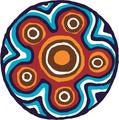Year 7 Term 2 Overviews

Year 7 - Term 2 curriculum
English:
For Year 7 English in term 2, students are learning to analyse a variety of non-fiction texts. They are studying the characteristics of texts, and identifying their purpose and content and how they are used to influence the audience.
Students are also exploring humour to understand its role in persuasion and meaning. They are learning how authors are able to manipulate certain language features, images and sound for a specific purpose.
Humanities:
In Term 2 Humanities Year 7 students are investigating the vital role that water plays in our world, and how access, usage and the water cycle itself can vary from place to place. They are investigating and analysing a range of geographical data to identify patterns and to propose sustainable solutions to issues of water scarcity.
This unit provides opportunities for our students to be creative, thoughtful, forward-thinking, reflective and solution-focused. It incorporates aspects of geography, science, technology, history and economics, and looks at the social and cultural importance of water in our world. This multi-faceted and cross-curricular approach is designed to help our young people see the interconnectedness of the world, and to understand the importance of making ethical and responsible decisions in the future.
Health:
For Year 7 Health Term 2, students will be focusing on equipping students with essential employability skills and fostering career-oriented mindsets. In this unit, students will explore various career pathways, identifying their interests and strengths while gaining insights into industries, professions, and core skills necessary for future success. Through self-exploration, research, critical thinking, communication, problem-solving, and goal-setting activities, students will develop the skills and dispositions crucial for navigating their future careers. Our goal is to empower students to thrive in an ever-evolving world through curiosity, self-awareness, and lifelong learning.
Maths:
In Term 2, Year 7 students will be using formulas to calculate the value of an unknown and replacing variables with numerical values in real-world calculations. By applying common formulas, they will examine the correlations between variables. In addition they will describe the relationships between variables from authentic data and substitute values into formulas to determine unknown values. They will create algebraic expressions by combining variables, constants, operations, and brackets.
They will utilize addition, subtraction, multiplication, and division when working with positive fractions and decimals, employing both efficient mental and written calculation methods. Students select among various equivalent forms of rational numbers and percentages to aid in calculations and employ basic estimations to evaluate the plausibility of outcomes. Additionally, they apply mathematical modeling to address real-world challenges encompassing rational numbers, percentages, and ratios across spatial, financial, and other practical domains. They will also justify their selection of representation in these contexts.
They create and apply formulas for determining the areas of triangles and parallelograms, as well as the volumes of rectangular and triangular prisms, in problem-solving scenarios. Additionally, they explain the connections between the radius, diameter, and circumference of a circle.
Students enumerate possible outcomes for simple experiments, assign probabilities to event outcomes, and forecast relative frequencies for related events. They will perform repeated single-step probability experiments and utilize digital tools to simulate outcomes, providing explanations for any disparities between predicted and observed results. Additionally, students will opt for various representations of rational numbers and percentages to aid calculations and employ basic estimations to assess the plausibility of outcomes. They will apply mathematical modeling to address practical challenges involving rational numbers, percentages, and ratios across spatial, financial, and other applied contexts, providing rationale for their chosen representations.
Science:
In Term 2, the Year 7 students are learning biological science. They are analysing the relationship between structure and function at cell, organ and body system levels. They are learning the systems of organs that carry out specialised functions. They will identify and classify living things. They will explain how living organisms can be grouped based on observable similarities and differences. They will explore the interactions between organisms in food chains and the food web.
The Technologies:
During Term two, students are engaging in an educational endeavor that integrates principles of design and horticulture. Guided by a structured methodology known as the design cycle, they embark on a systematic exploration of creating vertical gardens, vertical arrangements of vegetation cultivated along vertical surfaces. Initial phases involve comprehensive research and ideation, wherein students will explore various design concepts and identify suitable materials, often repurposed items such as discarded containers and receptacles. Subsequently, they will meticulously plan their endeavors, detailing resource requirements and construction processes.
This pedagogical initiative offers multifaceted benefits, facilitating experiential learning in gardening techniques, environmental stewardship, and sustainable design practices. Participants gain insights into the optimization of space for greenery and the prudent utilization of recycled materials, fostering an appreciation for ecological conservation. Moreover, the project cultivates critical thinking and problem-solving skills as children navigate challenges inherent in the design and implementation phases.
